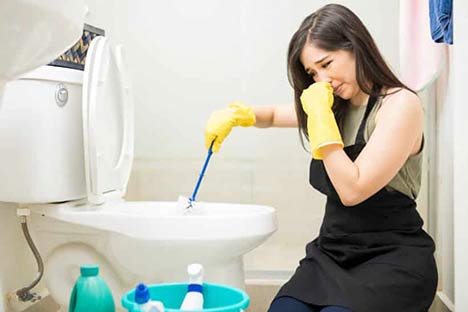
When faced with a clogged toilet, it can be a frustrating experience. However, before you reach for the plunger or call a plumber, there are several things you can try pouring down your toilet to unclog it. Here we will explore some effective methods that can help you tackle a clogged toilet without professional assistance.
The Importance of Choosing the Right Solution
Before we get into the various substances you can pour down a toilet to unclog it, it’s essential to understand the potential risks and consequences of using the wrong solution. Pouring the wrong substances down your toilet can not only exacerbate the problem but also cause damage to your plumbing system.
It’s crucial to consider the material your toilet is made of and the severity of the clog before attempting any DIY solutions. Remember, if your efforts don’t yield successful results, it’s always wise to seek professional help to avoid further complications.
Safe and Effective Solutions for Unclogging Your Toilet
Boiling Water
Tried and tested, pouring boiling water down your toilet is one of the easiest and most effective methods to unclog it. Boiling water can help break up the clog, especially if it’s caused by organic matter or toilet paper.
To use this method, boil a large pot of water and carefully pour it into the toilet bowl from waist height. The force of the water should help dislodge the clog and restore proper flushing.
Dish Soap and Hot Water
If the clog is not severe, combining dish soap with hot water can be a simple yet effective solution. The soap helps lubricate the pipes, allowing the clog to move more easily.
Start by squirting a generous amount of dish soap into the toilet bowl. Follow this by pouring hot water (not boiling) into the bowl. Allow the mixture to sit for several minutes before attempting to flush. If the clog remains, repeat the process or try a different method.
Baking Soda and Vinegar
Baking soda and vinegar are commonly used household products known for their cleaning and deodorizing properties. When combined, they create a fizzy reaction that can help break down stubborn clogs.
To use this method, start by pouring one cup of baking soda into the toilet bowl. Follow this by adding two cups of vinegar. Allow the mixture to sit for about 30 minutes before attempting to flush. If the clog persists, repeat the process or try another method.
Epsom Salt and Dawn
If you’re dealing with a severe or persistent clog, a combination of Epsom salt and Dawn dish soap can provide a more potent solution. Epsom salt helps soften the clog, while Dawn dish soap helps lubricate the pipes.
Begin by pouring a cup of Epsom salt into the toilet bowl, ensuring it reaches as close to the drain as possible. Follow this by squirting a generous amount of Dawn dish soap into the bowl. Allow the mixture to sit for at least one hour before attempting to flush. If the clog remains, you may need to repeat the process or seek professional assistance.
Caustic Soda
Caustic soda, also known as sodium hydroxide, is a powerful chemical compound that can effectively dissolve organic substances. It’s crucial to handle caustic soda with extreme caution to avoid burns and other safety hazards.
Begin by wearing protective gloves and safety goggles. Fill a bucket with cold water and slowly add caustic soda to the water, stirring gently. Allow the solution to sit for a few minutes. While exercising caution, carefully pour the mixture into the toilet bowl. Let it sit for approximately 20 minutes before flushing. In case of severe clogs, you may need to repeat the process or contact a professional plumber.

Teach children not to flush toys, wipes, or other non-flushable items down the toilet.
Preventing Future Clogs
While it’s helpful to know how to unclog a toilet, it’s equally important to take preventive measures to avoid future clogs. Here are a few simple tips to keep your toilet running smoothly:
– Avoid flushing excessive toilet paper at once, especially if it’s thick or textured.
– Teach children not to flush toys, wipes, or other non-flushable items down the toilet.
– Install a toilet paper holder that limits the amount of paper dispensed in one go.
– Regularly clean your toilet to prevent the build-up of mineral deposits or debris.
– Consider using a plumbing-friendly toilet paper that breaks down easily.
In Summary
A clogged toilet can disrupt your daily routine, but with the right methods and precautionary measures, you can unclog it without much hassle. From pouring boiling water to using common household products like dish soap, baking soda, or vinegar, there are various solutions to try.
Remember to always consider the severity of the clog and the material your toilet is made of before attempting any DIY solutions. If your efforts aren’t successful or you’re unsure, it’s best to call a drain cleaning service provider to prevent further damage to your plumbing system.
With proper care and preventive measures, you can reduce the chances of future clogs and keep your toilet functioning properly for years to come.
